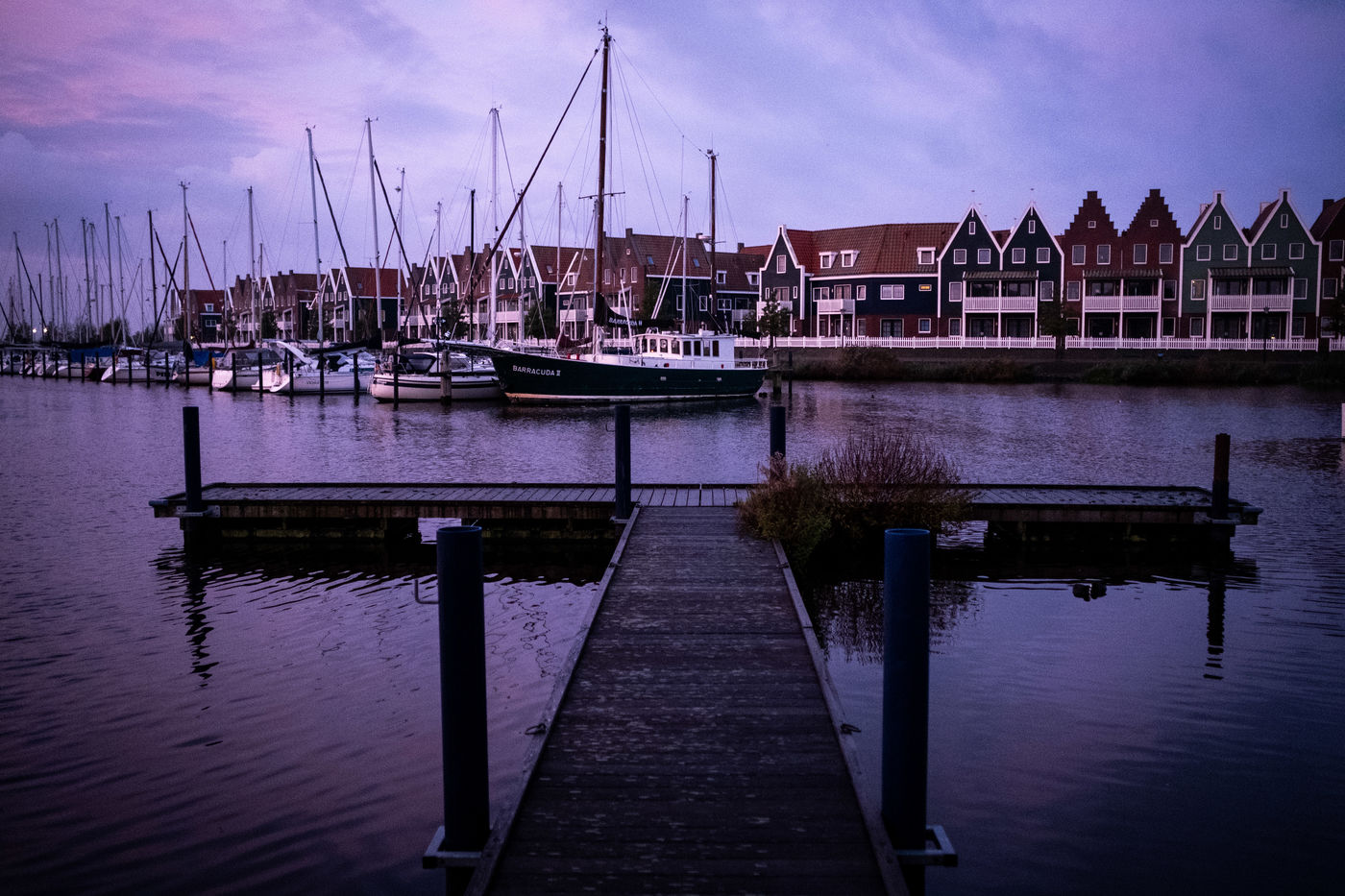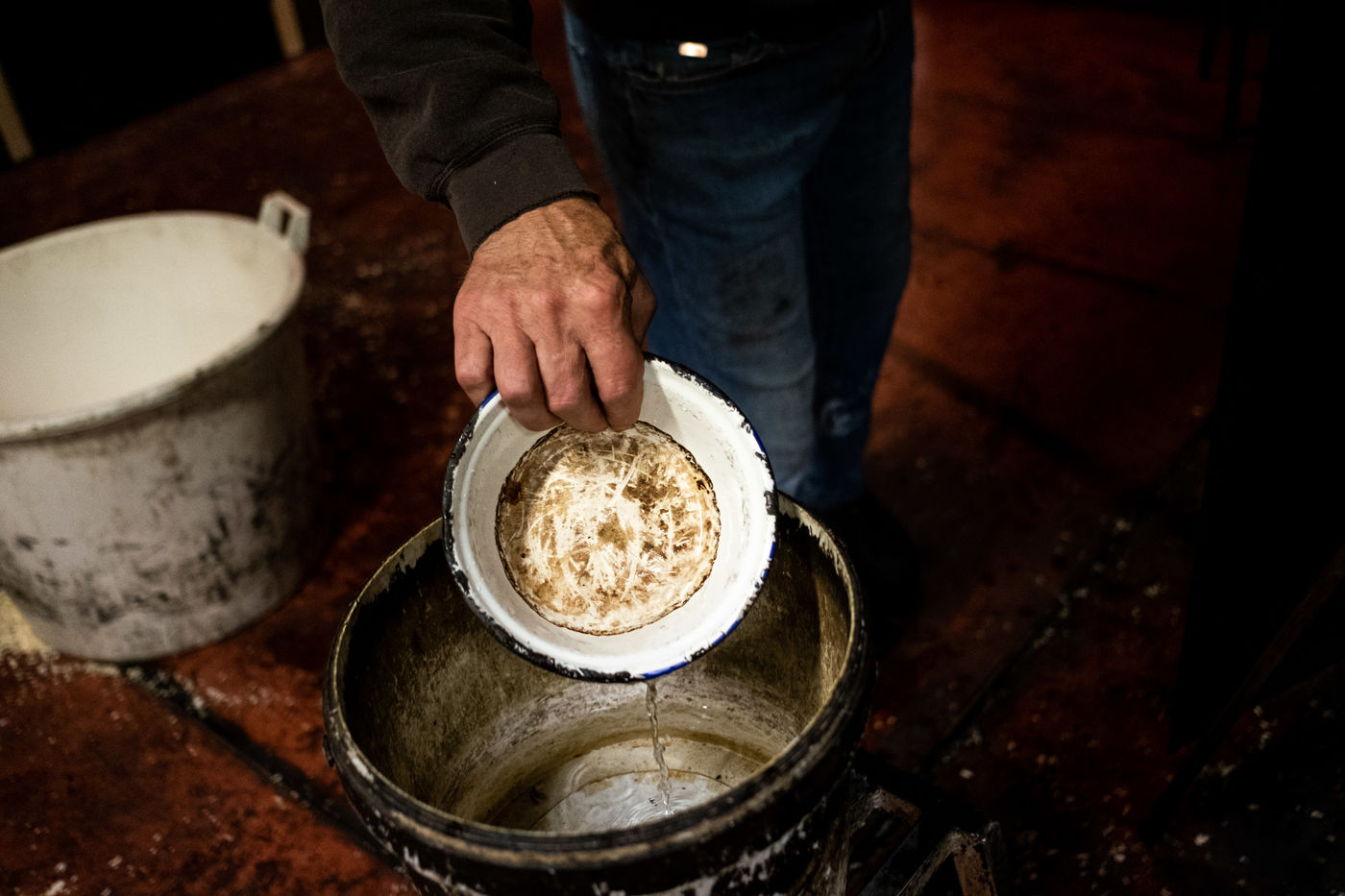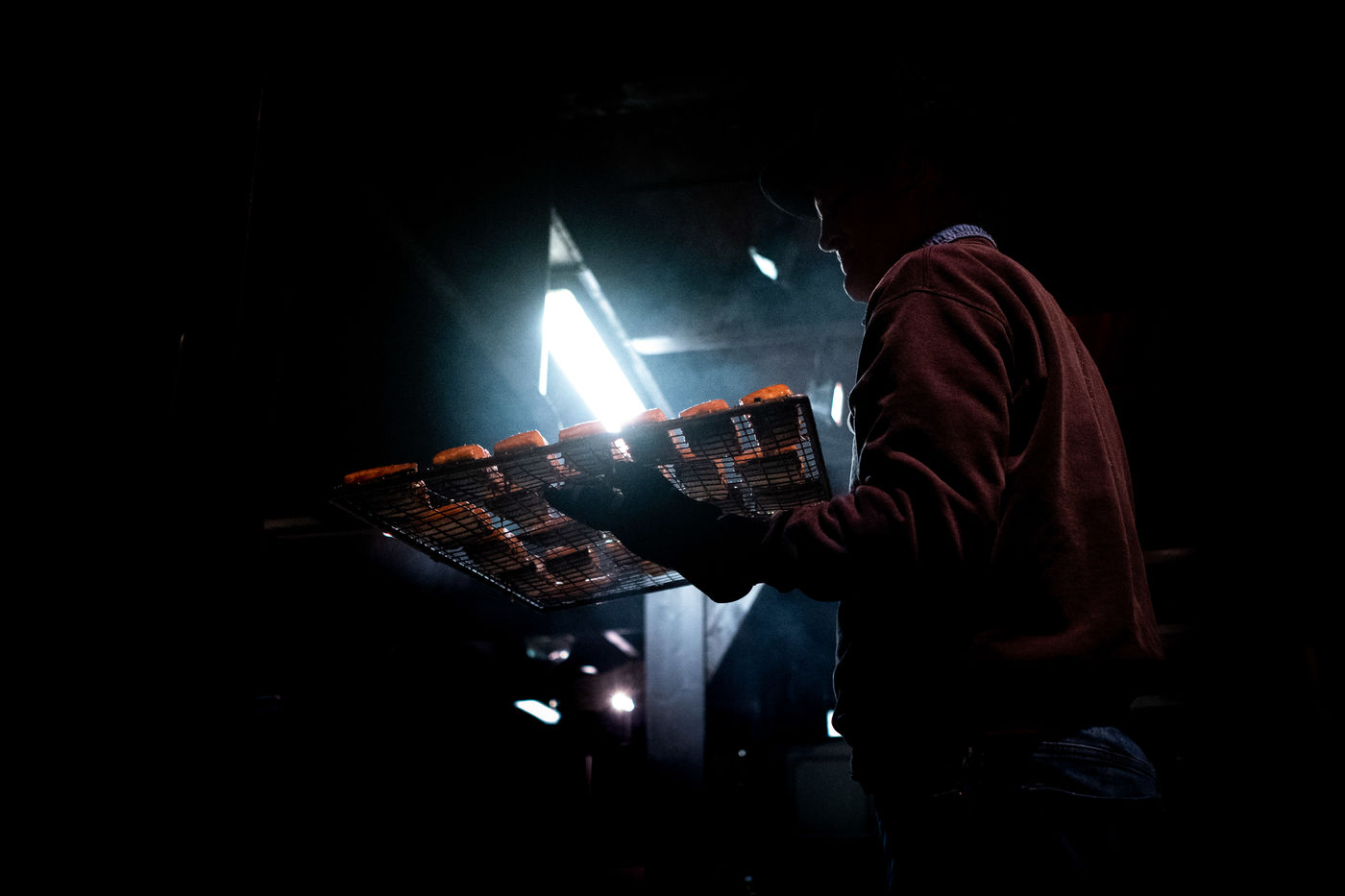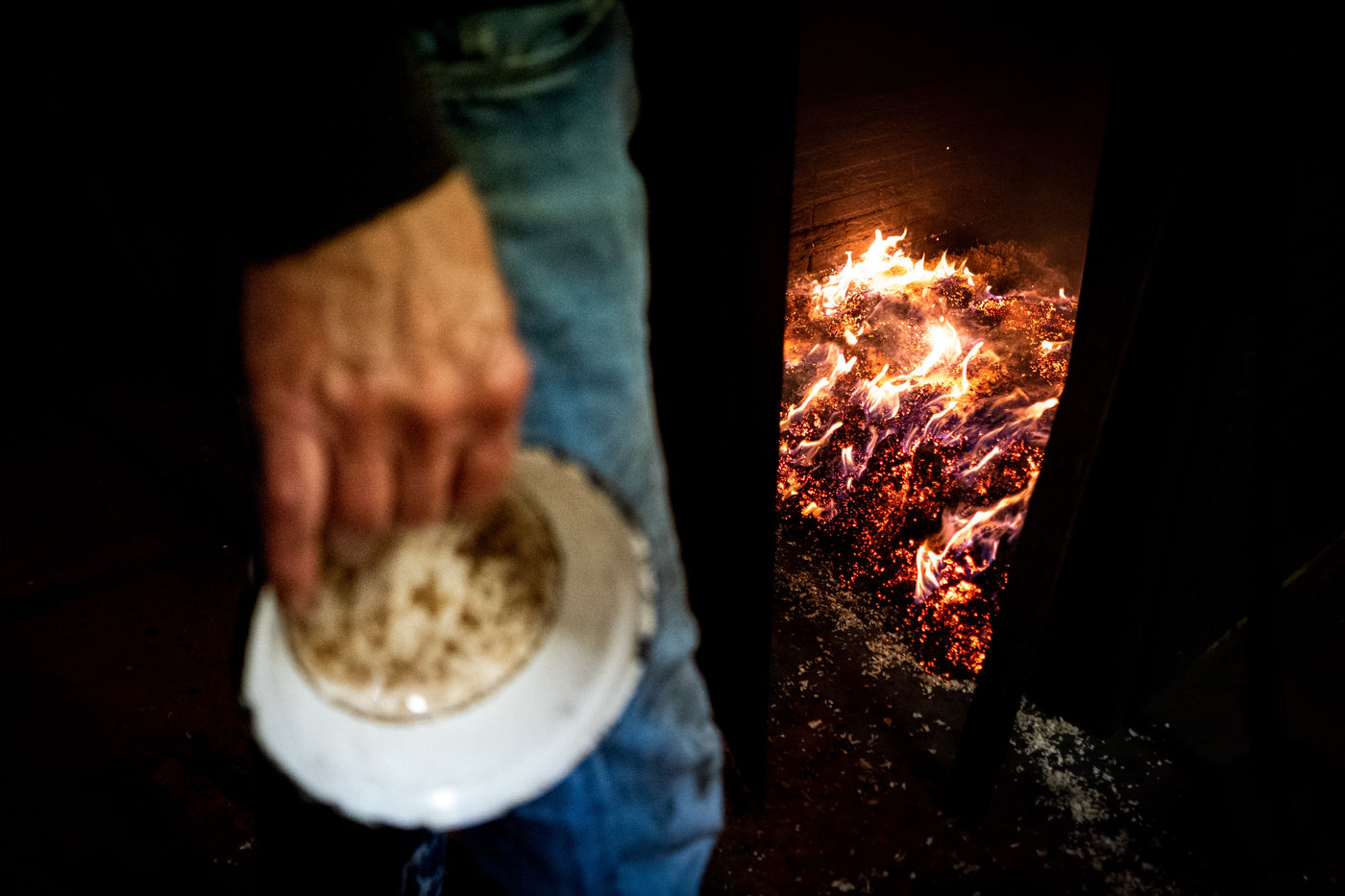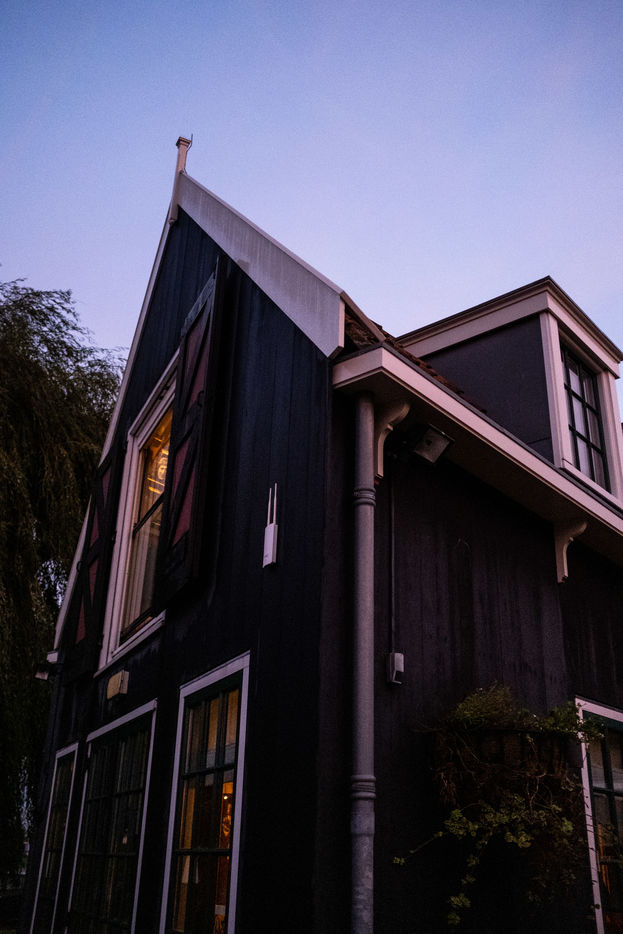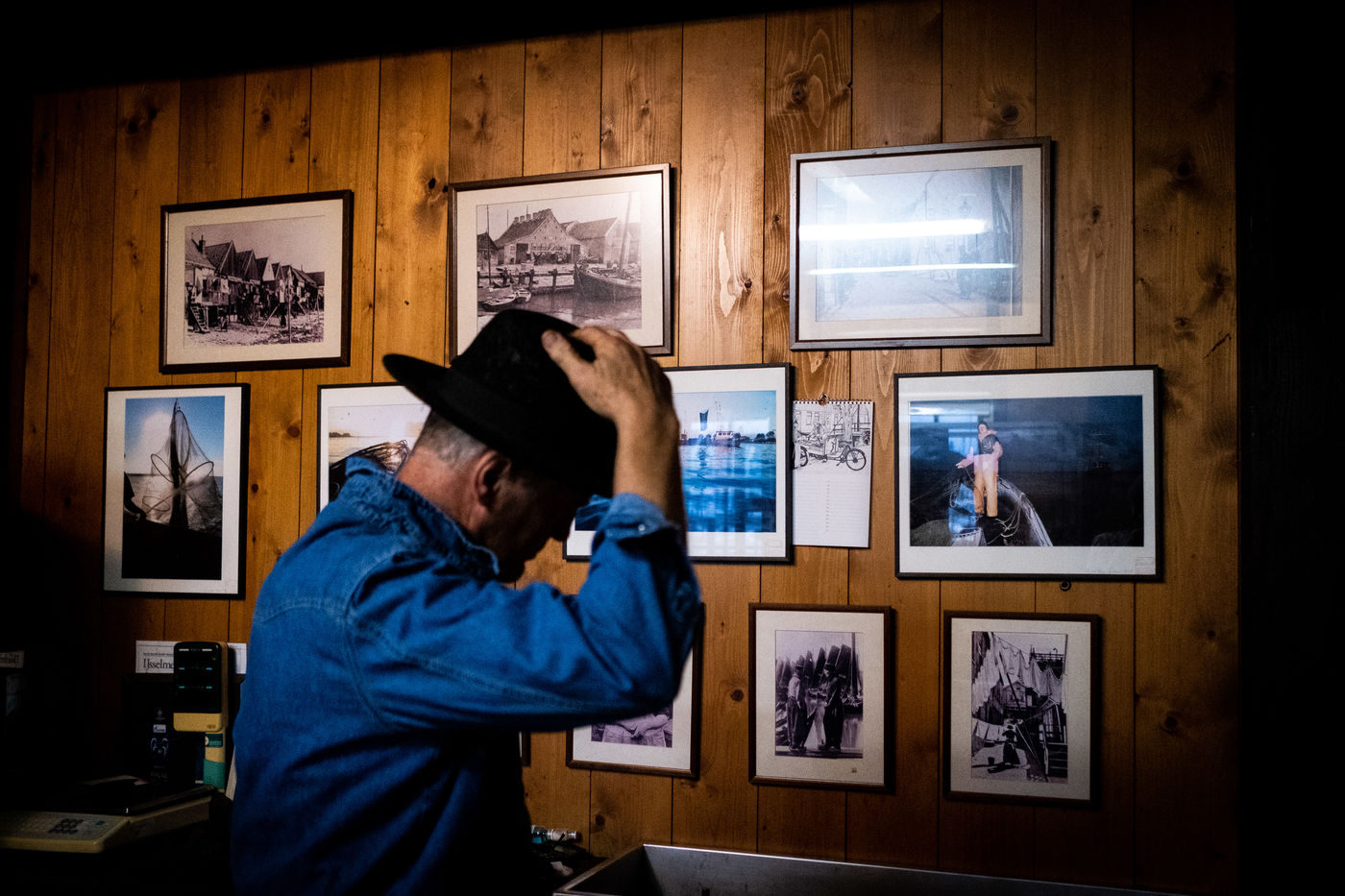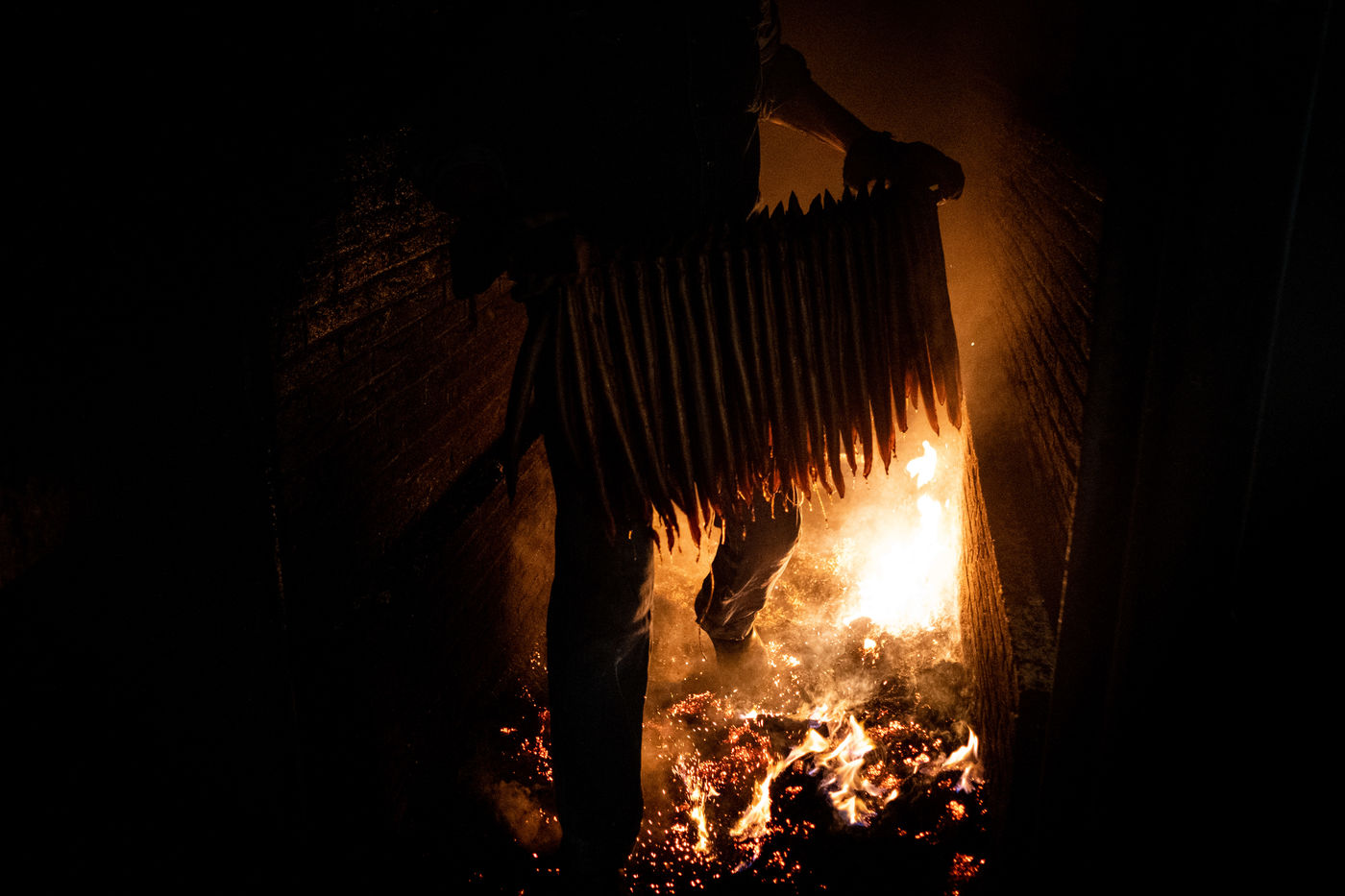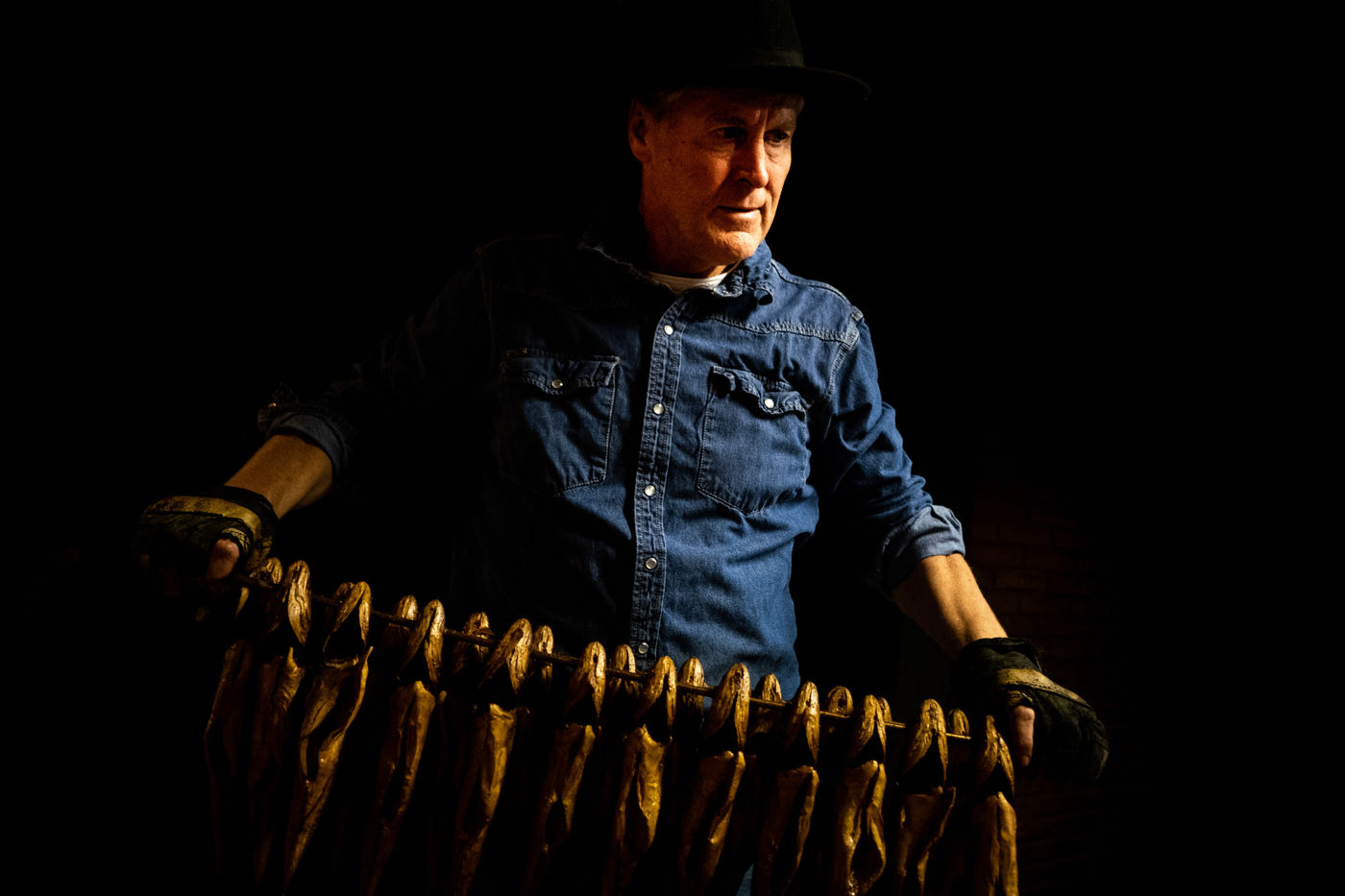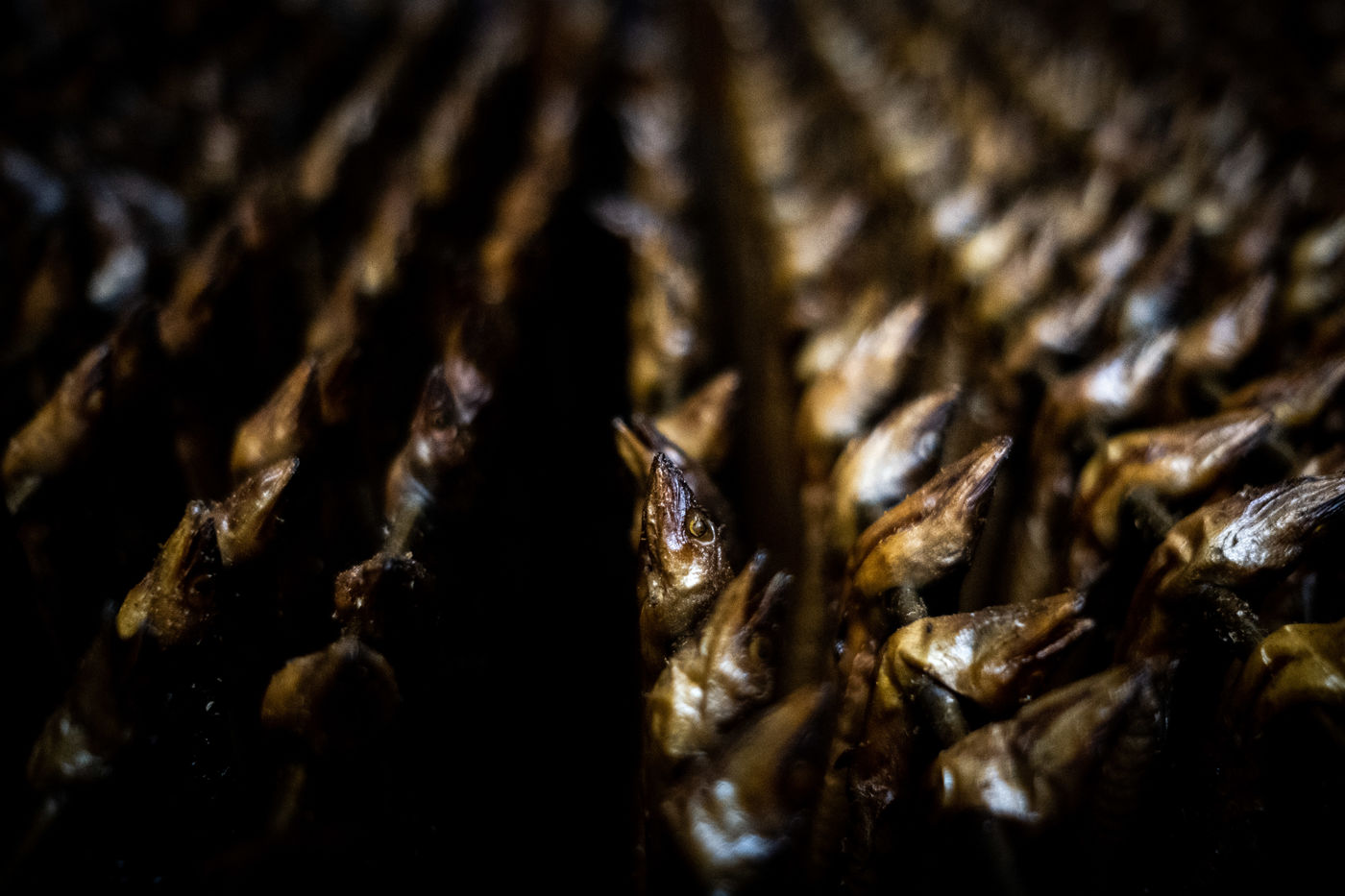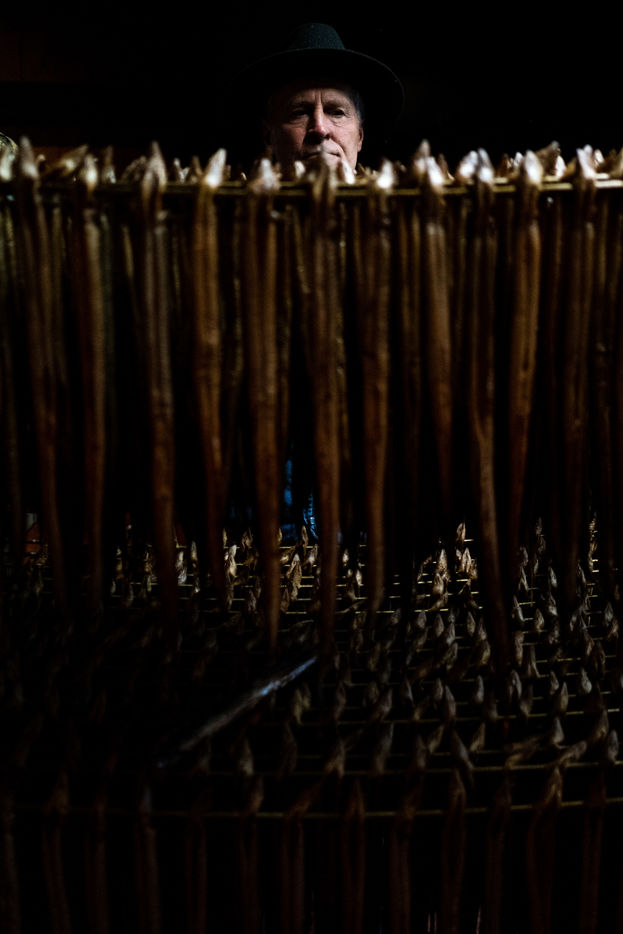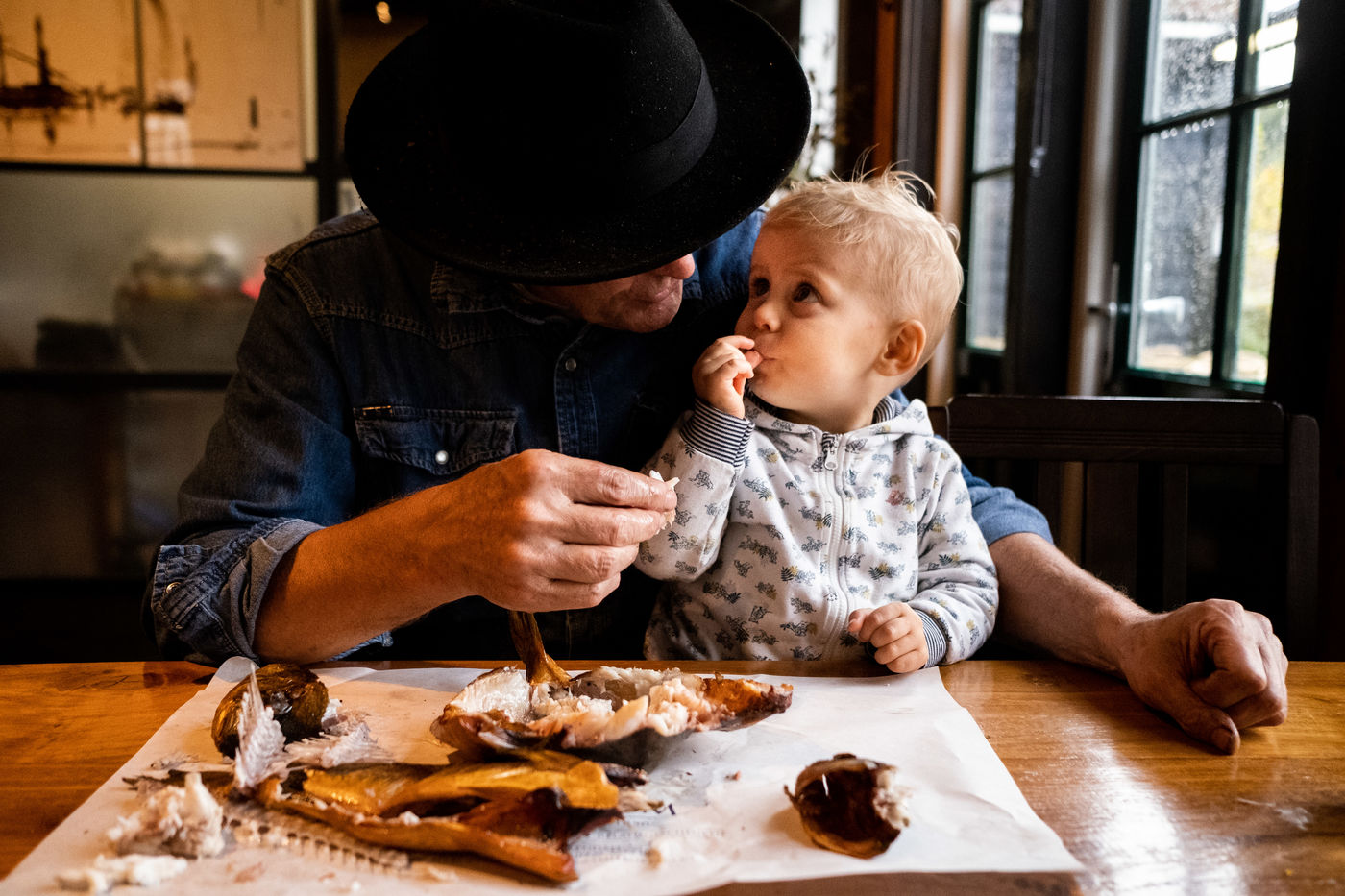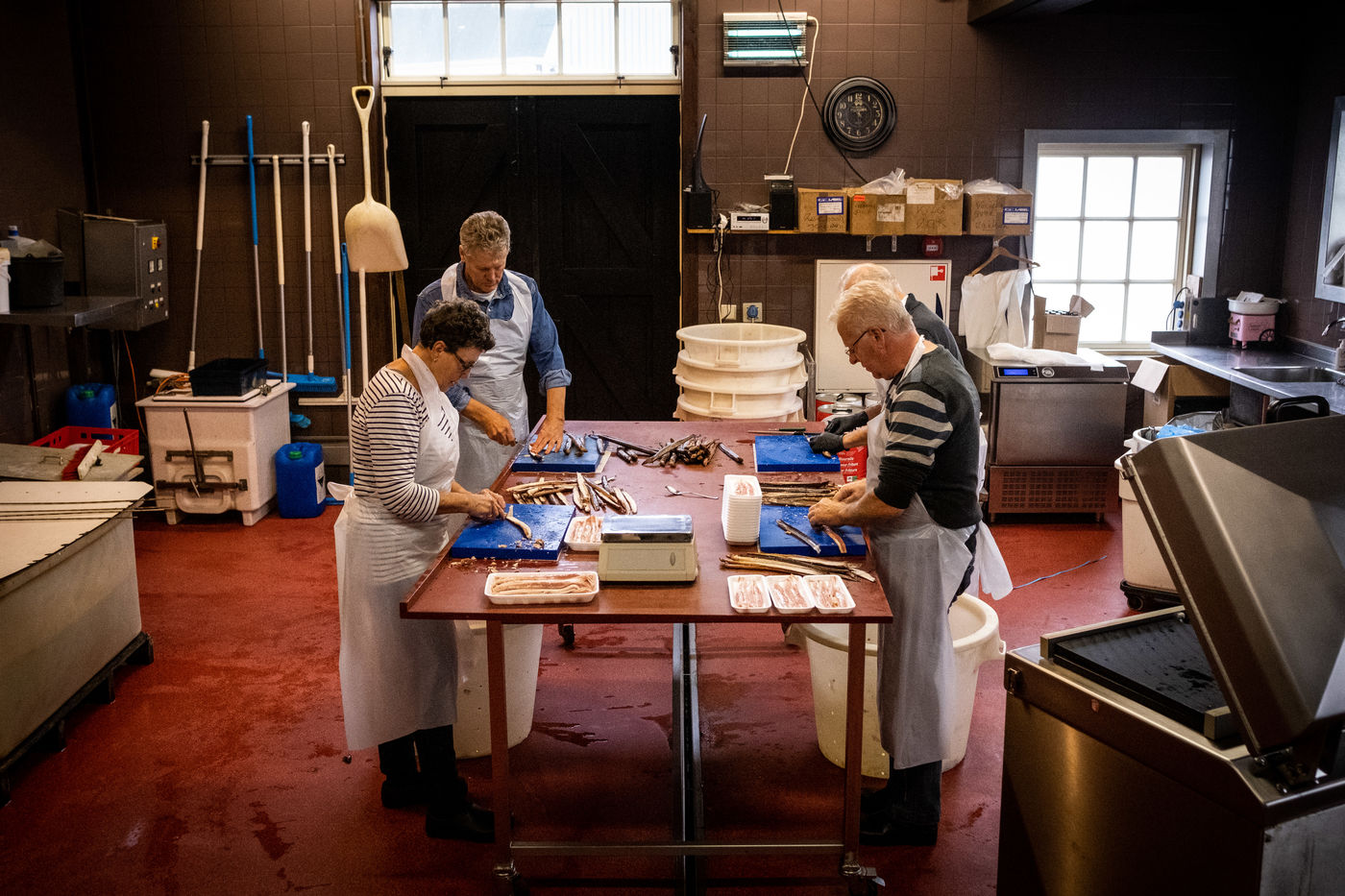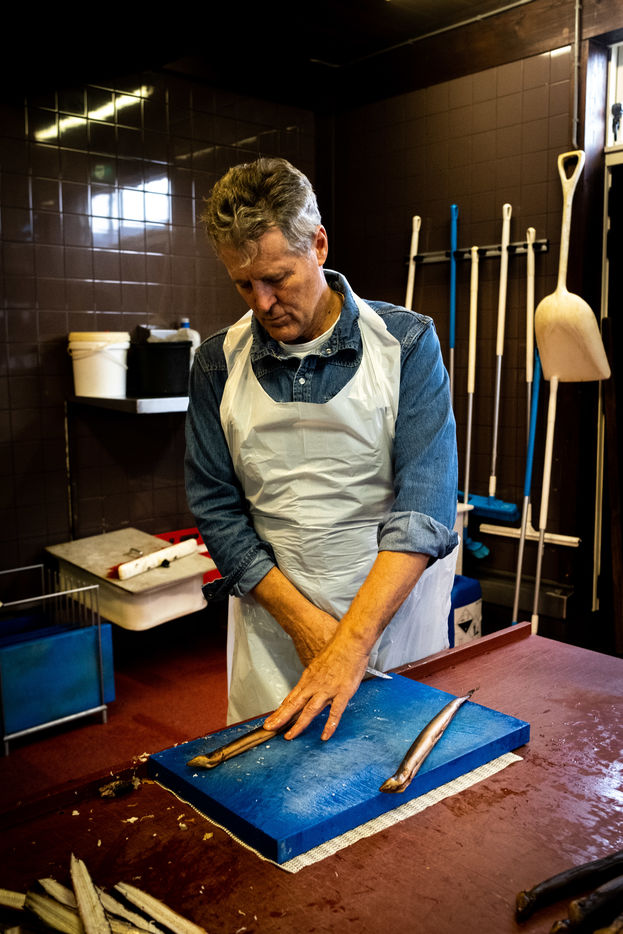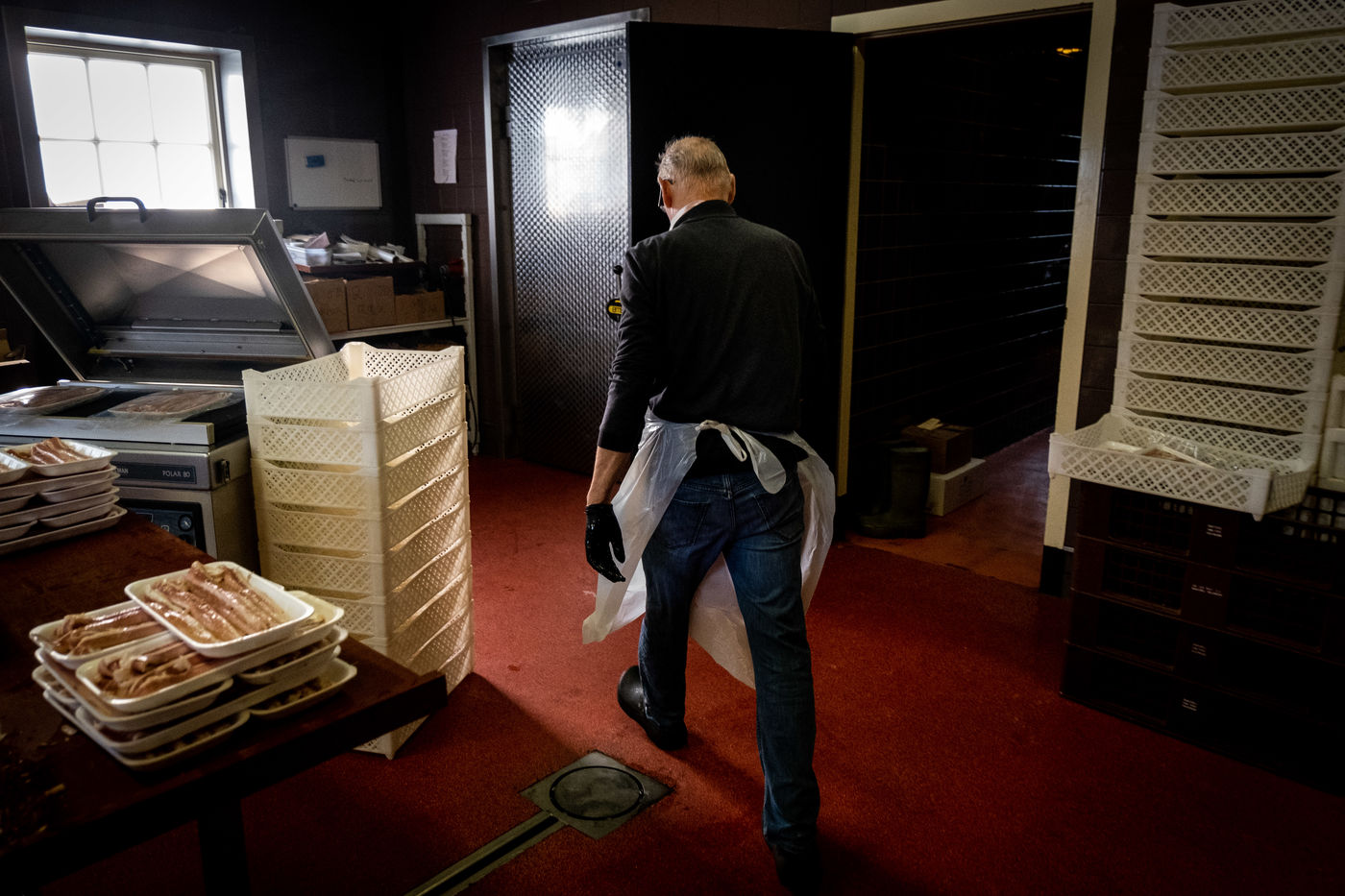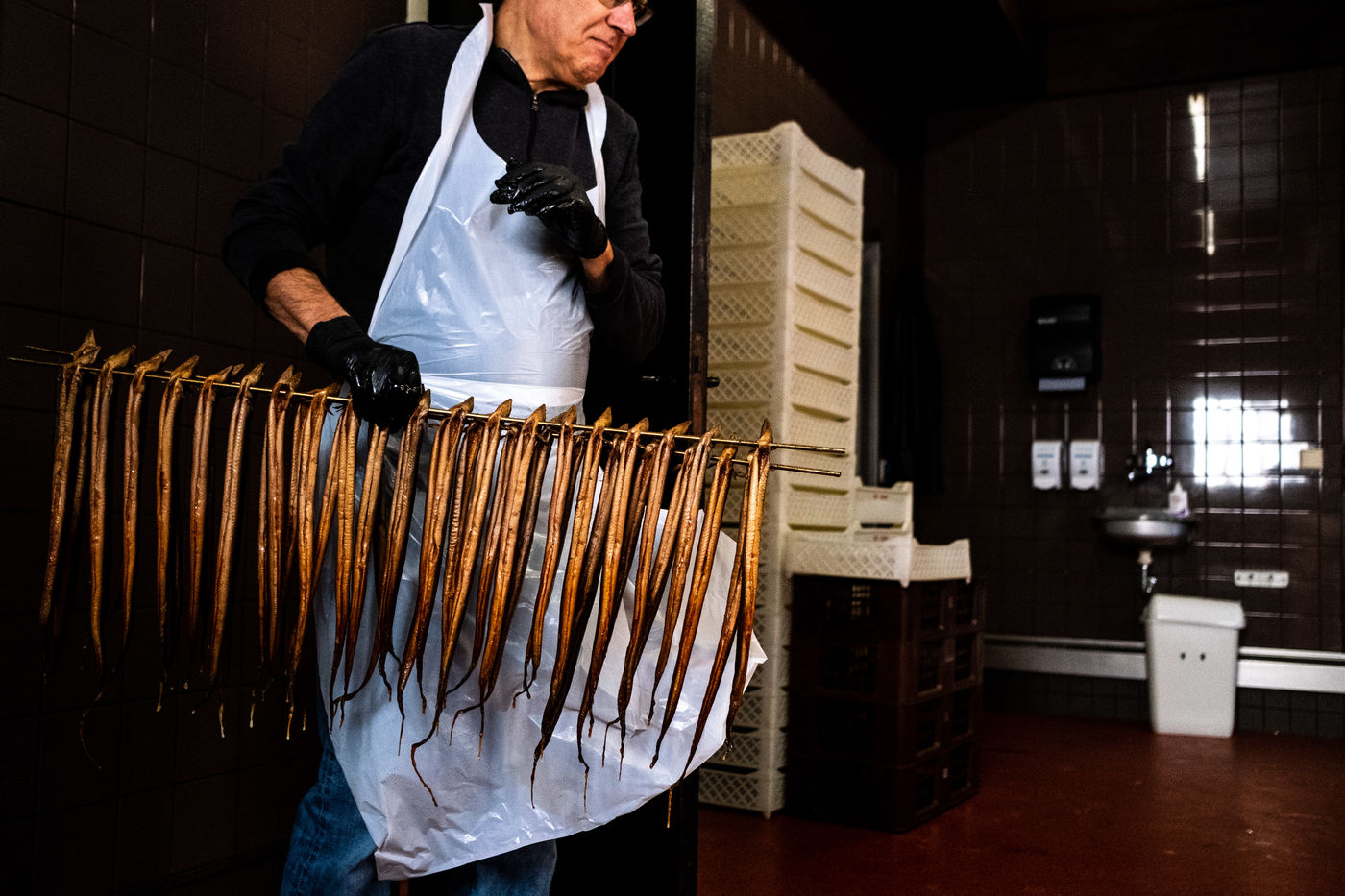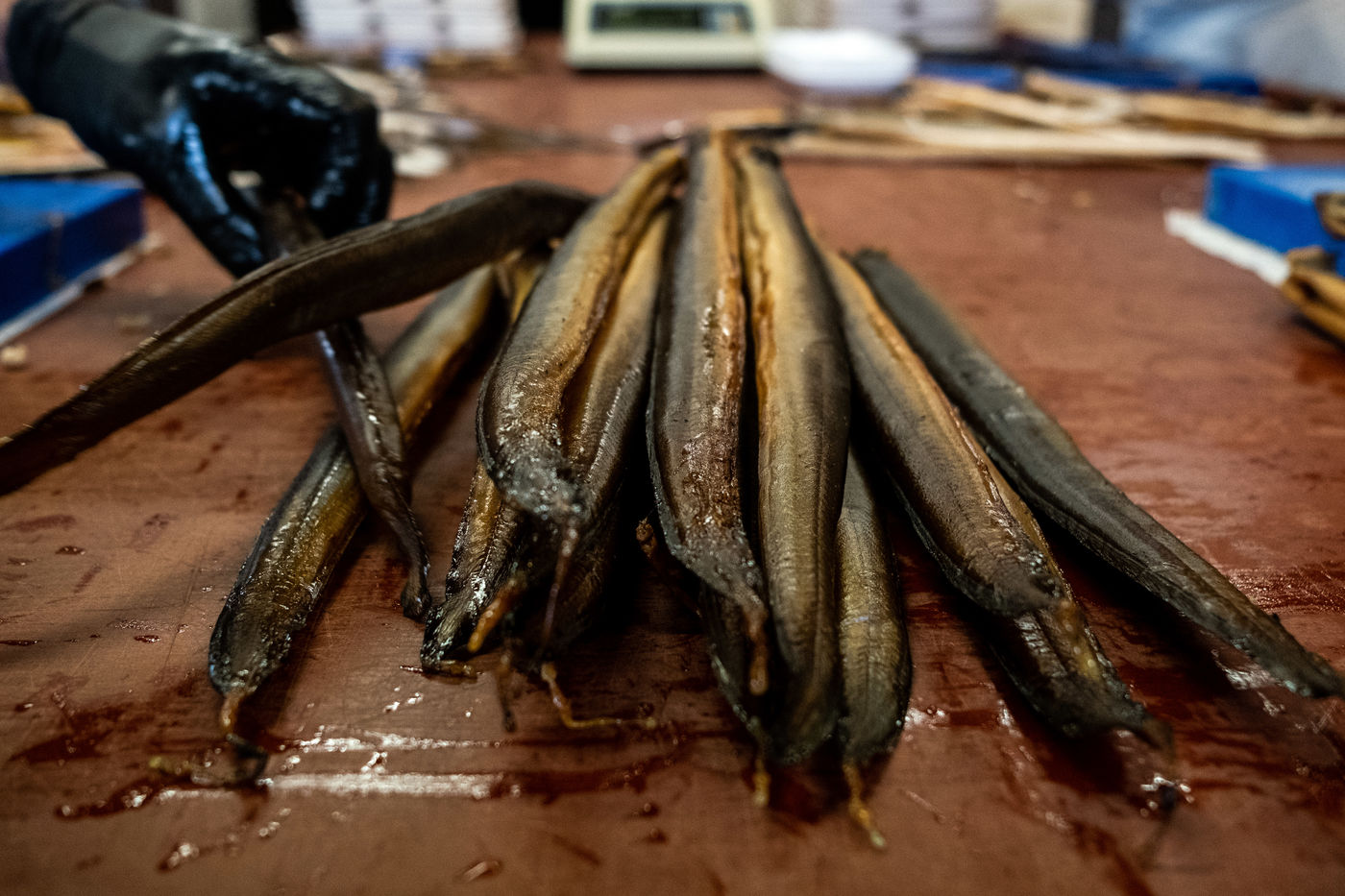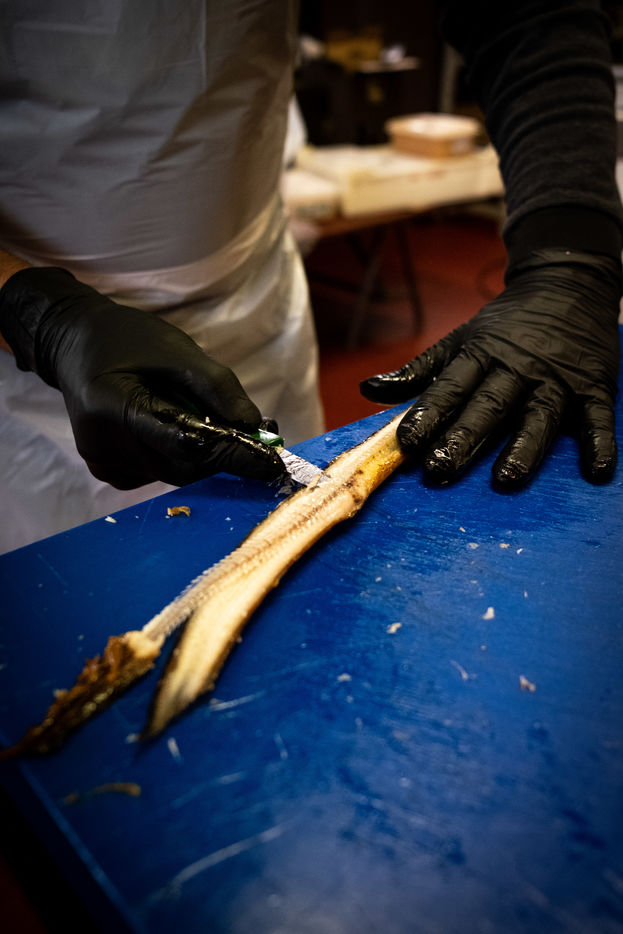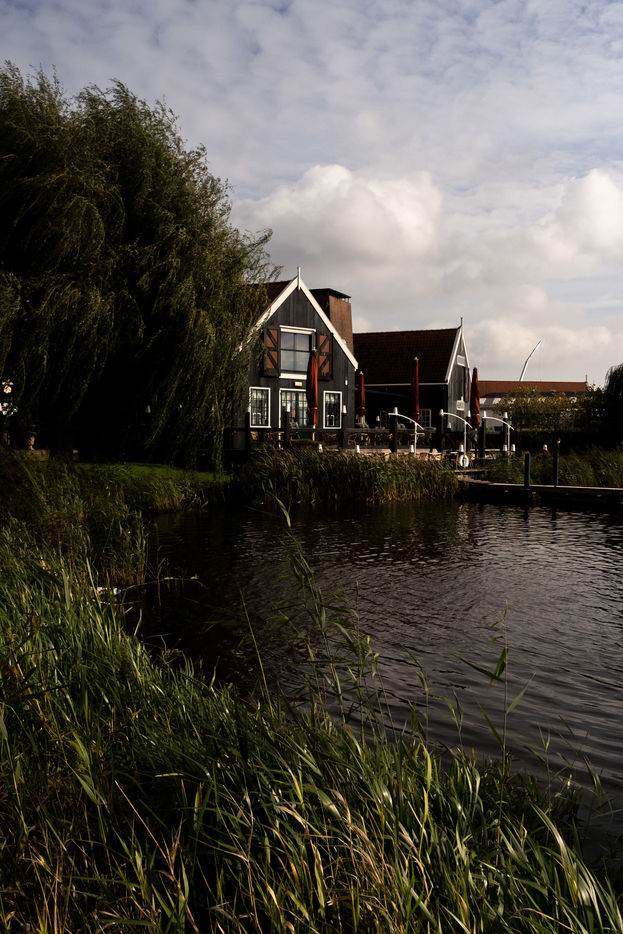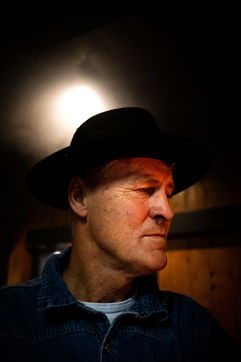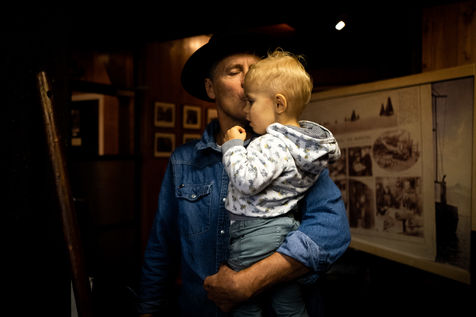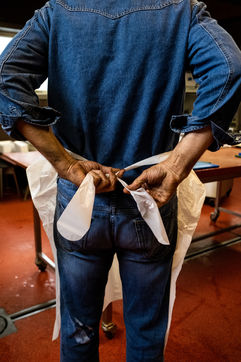FOODING #1 - SMIT BOKKUM (Pays-Bas)
C'est à Volendam, une petite localité portuaire à une trentaine de kilomètres d'Amsterdam, que nous retrouvons Jan Smit dans son restaurant et son fumoir portant le nom de sa famille : Smit Bokkum. Dans cette entreprise familiale très réputée aux Pays-Bas, on fume le poisson avec une méthode traditionnelle depuis 150 ans et six générations.
Comme chaque jour depuis 45 ans, Jan commence à travailler au fumoir aux aurores. Le silence du petit matin règne et le feu réchauffe la pièce. Jan reste auprès du fumoir pendant plusieurs heures pour contrôler le feu, l'atténuer avec un peu d'eau ou bien le raviver. Il profite de ce temps pour nous raconter son histoire.
Au commencement, les aïeux de Jan Smit faisaient uniquement du hareng fumé, grande tradition aux Pays-Bas, mais ce poisson finit par se faire de plus en plus rare dans le port. Ils se sont donc reconvertis à l'anguille fumée qui leur apportera une renommée mondiale. On vient de toute la planète à Volendam pour savourer ce mets fin et goûtu. Ces anguilles naissent à 1 000 mètres de profondeur dans la Mer des Sargasses dans les Caraïbes puis migrent en Europe après un long voyage d'un an.
Il y a 16 ans, ce sont les anguilles qui, à leur tour, ont fini par manquer sur les côtes néerlandaises. Ainsi donc, leur pêche est désormais autorisée uniquement de mai à août. En dehors de la saison, Jan achemine donc des anguilles de France et il s'est également reconverti au fumage d'autres poissons : saumon, dorade et bar.
La nature a souvent forcé la famille Smit à se renouveler. En effet, Jan nous raconte que, en raison des nombreux problèmes de montée des eaux aux Pays-Bas, chaque génération de sa famille a dû reconstruire le fumoir à un endroit différent. Aujourd'hui, l'emplacement de Smit Bokkum est très apprécié puisque la terrasse du restaurant est considérée comme l'une des plus belles du pays.
Néanmoins, pour Jan, pas question de changer de méthodes de fumage. « Désormais, tout le monde utilise des machines pour fumer. Ils mettent le poisson, appuient sur un bouton, et c'est terminé. Ici ce ne sera jamais le cas. ».
Il est 8h30, le soleil se lève, c'est l'heure de commencer à sortir successivement les différents poissons du fumoir. Jan enfile ses gants et, comme à son habitude, il s'engouffre dans le feu encore vif pour les retirer. À chaque fois qu'il sort quelque chose du fumoir, il en profite pour grignoter. « Je suis le meilleur client ici. Je mange tout les jours et tout le temps ! ».
Le processus se termine ensuite dans une pièce adjacente où, Jan, accompagné de sa soeur ainsi que deux autres employés, se lancent dans un long ballet de plus d'une heure et demie pendant lequel ils dépècent les nombreuses anguilles fumées qui partiront ensuite dans la cuisine du restaurant ou en barquettes dans leur petit magasin.
Vient ensuite l'heure du déjeuner. Entre les visiteurs et les habitués, le restaurant est plein. Jan, fier de son travail, déambule de table en table pour discuter avec les clients qui le complimentent.
FOODING #1 - SMIT BOKKUM
In Volendam, a small harbour town about thirty kilometres from Amsterdam, we meet Jan Smit in his restaurant and smokehouse bearing his family name: Smit Bokkum. In this family business, which is very well known in the Netherlands, fish has been smoked using a traditional method for 150 years and six generations.
As he has done every day for the past 45 years, Jan starts work in the smokehouse at dawn. The silence of the early morning reigns and the fire warms the room. Jan stays at the smokehouse for several hours to control the fire, to dampen it with a little water or to revive it. He uses this time to tell us his story.
At first, Jan Smit's forefathers only smoked herring, a great tradition in the Netherlands, but this fish became increasingly rare in the port. So they switched to smoked eel, which brought them worldwide fame. People from all over the world come to Volendam to enjoy this fine and tasty dish. These eels are born at a depth of 1,000 metres in the Sargasso Sea in the Caribbean and then migrate to Europe after a year-long journey.
Sixteen years ago, the eels were also in short supply on the Dutch coast. As a result, eels are now only allowed to be caught from May to August. In the off-season, Jan transports eels from France and has also turned to smoking other fish: salmon, sea bream and bass.
Nature has often forced the Smit family to change. Indeed, Jan tells us that due to the many problems with rising water in the Netherlands, each generation of his family has had to rebuild the smokehouse at a different location. Today, the location of Smit Bokkum is very popular as the restaurant's terrace is considered one of the most beautiful in the country.
However, Jan does not want to change the smoking methods. "Everyone uses smoking machines now. They put the fish in, press a button, and that's it. That will never happen here. ".
It's 8.30 a.m., the sun is rising, and it's time to start taking the different fish out of the smokehouse one by one. Jan puts on his gloves and, as usual, rushes into the still-live fire to remove them. Every time he takes something out of the smokehouse, he takes the opportunity to nibble. "I'm the best customer here. I eat every day and all the time! ".
The process then ends in an adjacent room where Jan, accompanied by his sister and two other employees, embark on a long ballet of more than an hour and a half during which they skin the many smoked eels that will then be sent to the restaurant's kitchen or in trays to their small shop.
Then comes lunch time. Between the visitors and the regulars, the restaurant is full. Jan, proud of his work, wanders from table to table chatting with the customers who compliment him.
